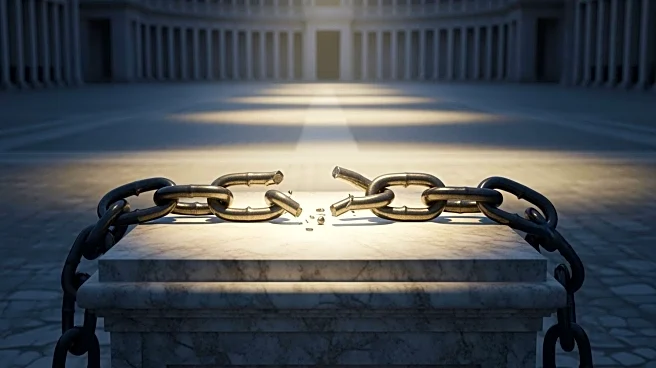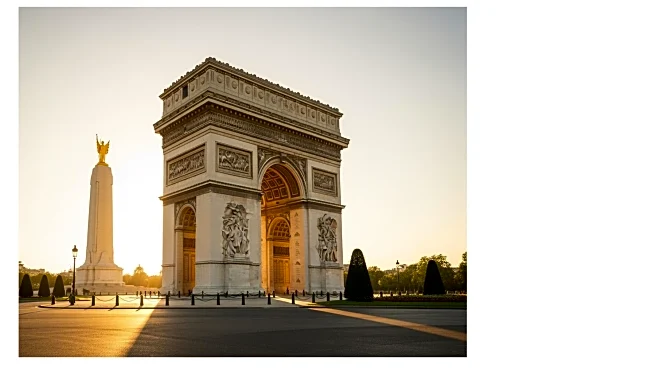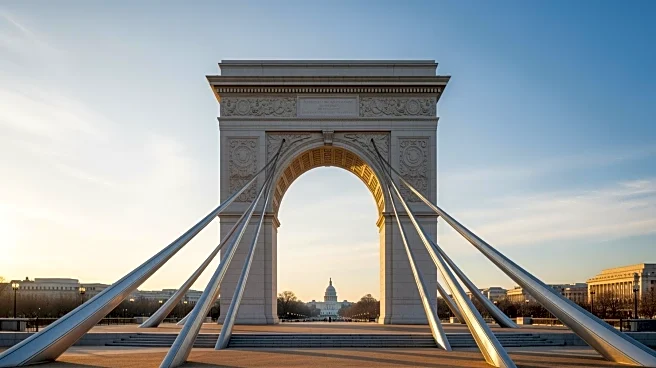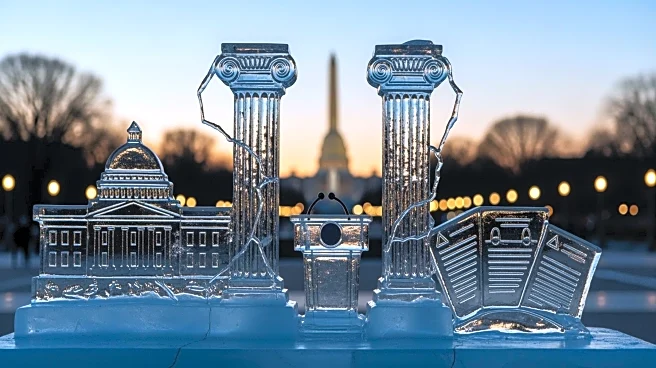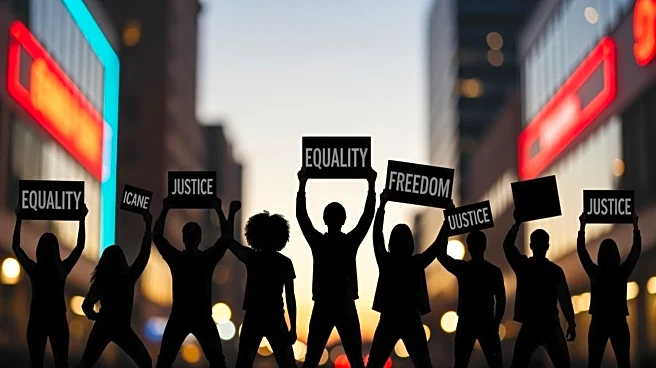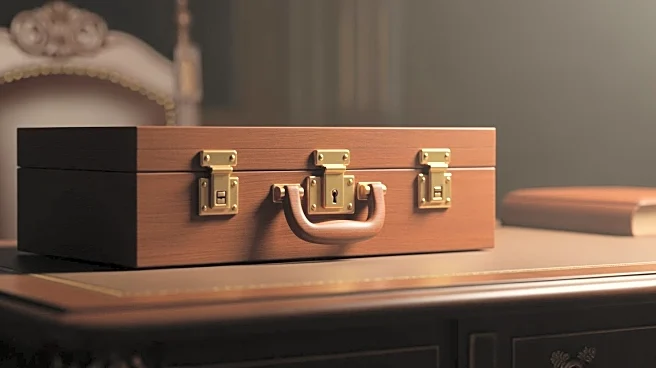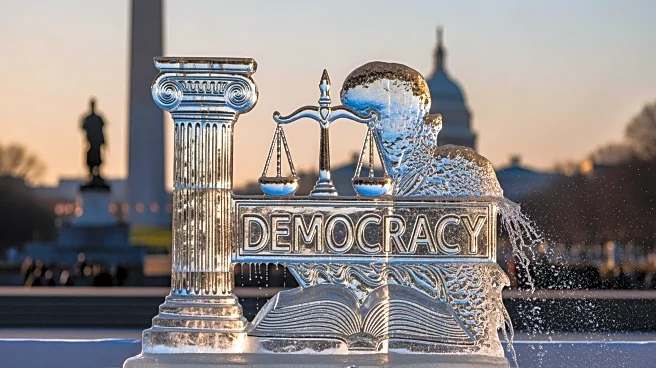What's Happening?
A statue depicting President Trump and Jeffrey Epstein was removed from the National Mall in Washington D.C. by the National Park Service. The statue, which appeared earlier in the week, was removed due
to non-compliance with the permit issued. The statue featured Trump and Epstein holding hands, with a plaque celebrating their friendship. The removal was unexpected, as the permit had authorized the statue to remain until Sunday evening.
Why It's Important?
The statue's removal highlights ongoing controversies surrounding President Trump's past association with Epstein. It reflects the sensitive nature of public displays and the scrutiny faced by political figures. The incident underscores the complexities of public art and protest, as well as the challenges in managing public spaces and permits. The removal also points to the broader discourse on accountability and transparency in political relationships.
What's Next?
The removal of the statue may prompt further discussions and protests regarding President Trump's past associations. It could lead to increased scrutiny and calls for transparency regarding Epstein's connections. Stakeholders, including political leaders and activists, may continue to engage in dialogue about the implications of such associations.
Beyond the Headlines
The incident raises questions about the role of public art in political discourse and the boundaries of protest. It highlights the intersection of art, politics, and public perception, and the impact of visual representations on societal narratives.
